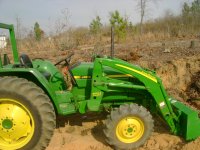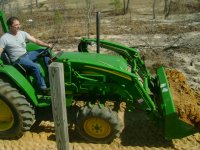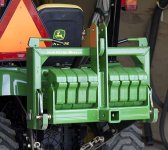texasjohn
Super Member
Yep, I think most of us took physics....understand moment of force, etc....
We DO HOPE that the center of mass stays between the front and rear axles.
If in front of the front axle, it takes nose dive.
If behind the rear, it does a wheelie.
Interesting point is that this point moves all around under the tractor as you lift stuff of various weights to various heights, move up and down hills, across hills (not recommended for steep angles), take curves at various speeds, raise/lower implements on 3ph, hit bumps/holes/bounce with wheels, etc..
This is why it is impossible to define a single "safe" angle for working on slopes.... your center of mass WILL vary!
We DO HOPE that the center of mass stays between the front and rear axles.
If in front of the front axle, it takes nose dive.
If behind the rear, it does a wheelie.
Interesting point is that this point moves all around under the tractor as you lift stuff of various weights to various heights, move up and down hills, across hills (not recommended for steep angles), take curves at various speeds, raise/lower implements on 3ph, hit bumps/holes/bounce with wheels, etc..
This is why it is impossible to define a single "safe" angle for working on slopes.... your center of mass WILL vary!


